History
“Biomechanics is the study of the structure and function of biological systems by means of the methods of mechanics.” (Herbert Hatze, 1974)
Biomechanics represents the broad interplay between mechanics and biological systems.
The American Society of Biomechanics (ASB) was founded in 1977 to encourage and foster the exchange of information and ideas among biomechanists working in different disciplines and fields of application, biological sciences, exercise and sports science, health sciences, ergonomics and human factors, and engineering and applied science, and to facilitate the development of biomechanics as a basic and applied science.
Specialties Within Biomechanics
Biological Science
Exercise and Sports Science
Health Sciences
Ergonomics and Human Factors
Engineering and Applied Science
Founding Members of ASB - 1977
| Thomas Andriacchi Thomas Armstrong Michael Askew Eugene Bahniuk Barry Bates Richard Brand Albert Burstein David Butler Dennis Carter Don Chaffin Krishnan Chandran Jerome Danoff Dwight Davy Robert Deusinger Roger Enoka F. Gaynor Evans Carl Gans Edward Grood James Hay H.K. Huang Maury Hull Ronald Huston Martha Jack J. Lawrence Katz David L. Kelley William Krause Shrawan Kumar |
R. Bruce Martin Bruce Mason Doris Miller Manssour Moeinzadeh Van C. Mow Richard Nelson Sally Phillips Gerald Pijanowski Carol Putnam Jean Landa Pytel George Rab Herbert Reynolds Verne Roberts Subrata Saha Albert Schultz Robert Shapiro Gary Soderberg Robert Soutas-Little Christopher Vaughan Stephen Wainwright James Walton Frederick Werner William Whiting Keith Williams Savio Woo Timothy Wright Charles Wunder |
The origin of Biomechanics
Socrates
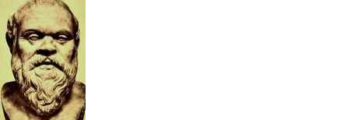
However arbitrary the numbering of our years may be, the turning of the century and the millennium offers an opportunity to think of our history, and our future. However, I am calling this a genealogy rather than a history because I want to emphasize the people who started the science of biomechanics, and to convey the notion that we inherit traits as well as knowledge from our scientific predecessors.Histories of science usually begin with the ancient Greeks, who first left a record of human inquiry concerning the nature of the world in relationship to our powers of perception. Socrates, born 2400 years ago, taught that we could not begin to understand the world around us until we understood our own nature. As scientists who seek knowledge of the mechanics within their own bodies, and those of other living creatures, we share something of Socrates’ inward inquiry. Fortunately, we do not share the public abuse that he suffered, and which led him, as an old man of 70, to be tried, convicted, and executed for “impiety and corrupting the youth of Athens.”
Plato
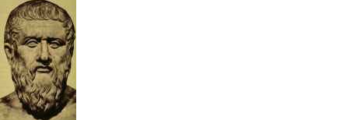
The execution of Socrates had a profound affect on Plato, 51 years his junior and a member of the Athenian aristocracy. He began the philosophical inquiries that set forth most of the important problems and concepts of Western philosophy, psychology, and logic, as well as politics. Plato postulated a realm of ideas that existed independently of the sensory world, and considered observations and experiments worthless. However, he also believed that mathematics, a system of pure ideas, was the best tool for the pursuit of knowledge. His conceptualization of mathematics as the life force of science created the necessary womb for the birth and growth of mechanics.
Aristotle
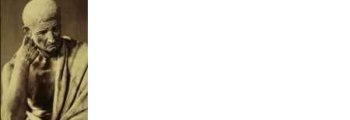
At age 17, Aristotle, the son of a physician in northern Greece, went to Athens to study at Plato’s academy. Aristotle had a remarkable talent for observation and was fascinated by anatomy and structure of living things. Indeed, Aristotle might be considered the first biomechanician. He wrote the first book called “De Motu Animalium” – On the Movement of Animals. He not only saw animals’ bodies as mechanical systems, but pursued such questions as the physiological difference between imagining performing an action and actually doing it. Aristotle eventually departed from Plato’s philosophy so far as to advocate qualitative, common sense science, purged of mathematics. However, his advocacy of syllogistic logic, the drawing of conclusions from assumed postulates, gave us the deductive method of modern science. Thus, in the span of a century ending 2300 years ago, three men identified our most fundamental scientific tools: deductive reasoning and mathematical reasoning. And in addition, biomechanics was born!
Galen
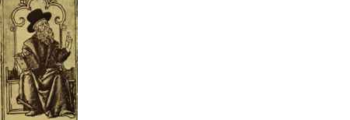
With the fall of Greece and the rise of the Roman Empire, natural philosophy waned in favor of technology. The second century anatomist, Galen, physician to the Roman emperor Marcus Aurelius, comes and goes, leaving his monumental work, On the Function of the Parts (meaning the parts of the human body) as the world’s standard medical text for the next 1,400 years, but nothing like another biomechanician is seen for a long, long time.
Leonardo Da Vinci
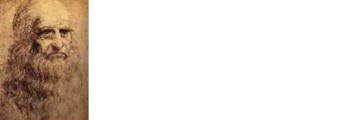
Indeed, the advancement of virtually all western science was halted until the Renaissance in the middle of the second millennium. Now we finally come to someone whom we might call a biomechanician of sorts: Leonardo da Vinci. Born poor in 1452 and largely self-educated, da Vinci became famous as an artist, but worked mostly as an engineer. He made substantial contributions to mechanics in the course of pursuing his numerous military and civil engineering projects and imaginative inventions, ranging from water skis to hang gliders. He had an understanding of components of force vectors, friction coefficients, and the acceleration of falling objects, and had a glimmering of Newton’s 3rd law. By studying anatomy in the context of mechanics, da Vinci also gained some insight into biomechanics. He analyzed muscle forces as acting along lines connecting origins and insertions and studied joint function. However, delightful as his notebooks are to explore, they were personal and unpublished for centuries, and his brilliant daydreaming had little scientific impact.
Andreas Vesalius

Galen’s anatomical hegemony was finally challenged when, in 1543, at age 29, the Flemish physician Andreas Vesalius published his beautifully illustrated text, On the Structure of the Human Body. Even so, it took still more centuries for the world to accept fact that Galen had made errors corrected by Vesalius. There is an old story of an anatomist telling a student that the reason the cadaver did not conform to Galen’s description was that human anatomy had changed in the intervening thousand years. We smile, though we, too, still get lost in the darkness of our dogmas.
Copernicus
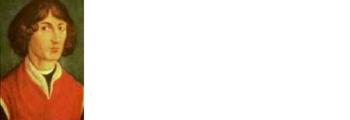
The year Vesalius published, Copernicus died. Copernicus had discreetly introduced the concept of a heliocentric solar system in 1514, but concern about the reaction of the church to this theory prevented its publication until Copernicus was literally on his deathbed. On the Revolutions of the Heavenly Spheres not only revolutionized astronomy, it revolutionized science by re-introducing mathematical reasoning, the antithesis of Aristotelian common-sense physics. This had direct implications for biomechanics, too, because the desire to explain the orbits of the heavenly spheres led directly to the development of mechanics.
Galileo

The father of mechanics, and sometime biomechanician, was Galileo Galilee, born 21 years after Copernicus died. At age 17, Galileo, son of a musician-mathematician of little wealth, was sent to the University of Pies to gain wealth through the study of medicine. This paternal plan was unsuccessful because Galileo could never accept anything his professors had to say on faith, but insisted on questioning everything and demanding that every fact be proven. This attitude being unacceptable in medical school, Galileo was nicknamed “the wrangler” for his damned argumentativeness. On being forced out of the university at age 21, he returned home to Florence and further disappointed his father by turning to mathematics, having discovered that its professors were obliged to prove every damned thing they taught!
Galileo at University of Padua
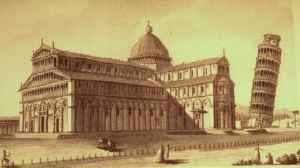
At age 25 Galileo returned to Pisa as lecturer in mathematics, but within 3 years his caustic wit had stolen so many students from other faculty that he was forced to leave again. So, he moved again, this time up to Professor of Mathematics at the more prestigious University of Padua! The strength of his powerful, irascible personality came to dominate the scientific world of his time; he became the great animating spirit of the scientific revolution that followed the Renaissance. At age 45 he heard about the invention of the telescope and dropped everything else to make and use, sight unseen, one of his own. His observations with this instrument – the moons of Jupiter, and the mountains of our own moon, for example – were published the next year.
Galileo and Allometry
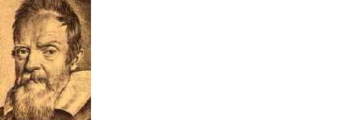
I dwell on Galileo because he also made important contributions to biomechanics. He was particularly aware of the mechanical aspects of bone structure and the basic principles of allometry. For example, he noted that: – animals’ masses increase disproportionately to their size, and their bones must consequently also disproportionately increase in girth, adapting to loadbearing rather than mere size – the bending strength of a tubular structure such as a bone is increased relative to its weight by making it hollow and increasing its diameter – marine animals can be larger than terrestrial animals because the water’s bouyancy relieves their tissues of weight Galileo’s genius as both a mathematical theorist and an observational experimentalist enabled him to make his most fundamental contribution to science, the essence of what we now call the scientific method: the need to examine facts critically and reproduce known phenomena experimentally so as to determine cause and effect and arrive at explanations for what is observed. Furthermore, and most importantly, he sought to formulate physical laws mathematically, further freeing scientific conclusions from the misperceptions of the senses.
Alfonso Borelli
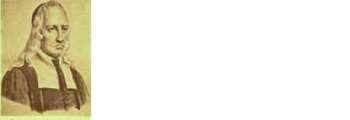
We now come to the our most familiar ancestor in this genealogy – Giovanni Alfonso Borelli. There were close connections between Borelli and Galileo. The son of a Spanish soldier and Italian mother, Borelli was born in Naples in 1608, when Galileo was 44 years old. At age 16 Borelli went to Rome, where he became a student of Galileo’s former student, Benedetto Castelli, founder of the science of hydraulics. Borelli also knew Galileo himself, and was apparently in Rome in 1632-33 during the time of Galileo’s trial by the Inquisition. A few years later, Castelli’s recommendation helped Borelli obtain a lectureship in mathematics in distant Messina, on the northeast coast of Sicily, across from the toe of Italy. He worked in Messina until, at age 50, he ascended to the chair of mathematics at Pisa, where Galileo had taught as a young man.
Marcello Malpighi
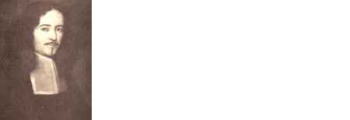
There he worked closely with Marcello Malpighi, the much younger chair of theoretical medicine. (Imagine, theoretical medicine, in 1658!) Malpighi was to become the greatest of the early microscopists, and the father of embryology. He, Borelli, and Descartes were key figures in establishing the iatrophysical approach to medicine, which held that mechanics rather than chemistry was the key to understanding the functioning of the human body.
De Motu Animalium
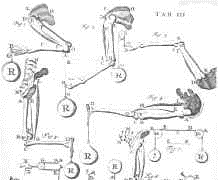
Somehow, there was a falling out between these men, and Borelli left Pisa and returned to Messina, and later, at age 67, he moved to Rome where he died on New Year’s eve, 1679. His great treatise, the second book called De Motu Animalium, was published shortly after his death. Borelli was the first to understand that the levers of the musculoskeletal system magnify motion rather than force, so that muscles must produce much larger forces than those resisting the motion. Building on the work of Galileo, and an intuitive understanding of static equilibrium, Borelli figured out the forces required for equilibrium in various joints of the human body well before Newton published the laws of motion. He also determined the position of the human center of gravity, calculated and measured inspired and expired air volumes, and showed that inspiration is muscle-driven and expiration is due to tissue elasticity. Paul Maquet’s translation of De Motu Animalium makes it possible for every biomechanician to see why the ASB’s highest award is named for Borelli. Borelli also contributed significantly to astronomy, improving on some of Galileo’s results. For example, Galileo had never come to grips with Kepler’s elliptical orbits, deriving circular ones instead. Borelli attended to this, postulated that comets follow parabolic orbits, and tried to predict the orbits of Jupiter’s moons by considering the influence of both Jupiter and the sun. The latter work presaged Newton’s concept of universal gravitation. He also was the first to describe planetary motion around the Sun in terms of centrifugal and centripetal forces.
Motion Analysis

After Borelli, there is little sign of biomechanics in the literature until the latter half of the 19th century, which Benno Nigg has called “the gait century.” The idea of investigating locomotion using cinematography may have been suggested by the French astronomer Janssen; but it was first used scientifically by Etienne Marey, who first correlated ground reaction forces with movement and pioneered modern motion analysis. In Germany, the Weber brothers hypothesized a great deal about human gait, but it was Christian Wilhelm Braune and his student Otto Fischer who significantly advanced the science using recent advances in engineering mechanics.
Industrial Revolution

During the same period, the engineering mechanics of materials began to flourish in France and Germany under the demands of the industrial revolution. Engineers had learned about principal stresses from Augustin Cauchy, and German engineers were actually calculating the stresses in railroad bridges when they designed them – a novel idea for cut and try American and English engineers! This led to the rebirth of bone biomechanics when the railroad engineer Karl Culmann and the anatomist Hermann von Meyer got together one famous day and compared thestress patterns in a human femur with those in a similarly shaped crane, as shown here. Then Julius Wolff heard about their little conversation, and Wolff’s law of bone remodeling began to be a guiding tenet in 20th century orthopaedic medicine. Having arrived on the threshold of the 20th century, I’ll end my genealogy because the family of biomechanicians now begins to beget and begat like mad! The number of prominent 20th century biomechanicians is far too numerous to discuss here. What can we conclude from this genealogy of biomechanics? Clearly, interest in biomechanics is ancient. From its earliest manifestations, science has looked inward as well as outward. This involved questions of epistemology but also human physiology, including biomechanics. Our interest in biomechanics springs from the same source as Aristotle’s – curiosity about ourselves. The difference is that our scientific activities are specialized in biomechanics, while Aristotle’s interest was only part of a much wider pursuit of science. It seems to me that, as a manifestation of curiosity, science is fundamentally all-encompassing rather than specialized. For most of history, the same thing was true of scientists, and scientific disciplines did not exist.
The Future
Actually, scientific disciplines arose in Borelli’s century, when scientists began to organize to cultivate and promote science. Indeed, Borelli was a key figure in one of these early organizations, the Accademia del Cimento, the first institution devoted solely to scientific experiment. Thus began the institutionalization and professionalization of science, and this led to the formation of disciplinary boundaries. The “natural philosophers” who studied astronomy one month and biomechanics the next gave way to scientific specialists. This fragmentation of science accelerated during the 20th century, according to historians of science, because of scientists’ desire to gain identity in a growing population of academics, and competition for funds, positions, and students. It is sad to think how much of our activity today is driven by pressure to secure funding rather than our scientific curiosity. And now we have interdisciplinary disciplines like biochemistry, biophysics, and our own biomechanics: new disciplines to fill in the increasingly narrow gaps between disciplines! And within each of these are sub-sub-specialists in this or that. Does the advancement of science depend on an infinite progression of specialization? What is the future of biomechanics, the ASB, and science in general? Will competition for resources among the increasing population of scientists fractionate science even more? The modern model for success in scholarship has been to find a niche – a subspecialized research topic – and stay within it. I am opposed to this advice. It is very frustrating to read a grant proposal from someone whose view is so narrow that they don’t realize the explanations for what they are probing can be found in a neighboring part of the literature. I think an important mission of research societies today should be to foster integration of scientific knowledge. Rather than being the fine boundary between biology and mechanics, I think biomechanics should represent the broad interplay between the two, including the subdisciplines defined in our bylaws, and more. As we move into the next century, I hope that the ASB will continue to alleviate the confining effects of greater specialization by emphasizing the broader perspectives conceived by our founders in Iowa City in 1977. It certainly seems to me that the superb program and meeting arrangements here in Pittsburgh have been a shining example of our society’s great tradition in that regard. I thank you all for a wonderful meeting, for the privilege of serving as president, and for your kind attention to my talk. May all your students be wranglers, and may you have the wisdom to teach them!
